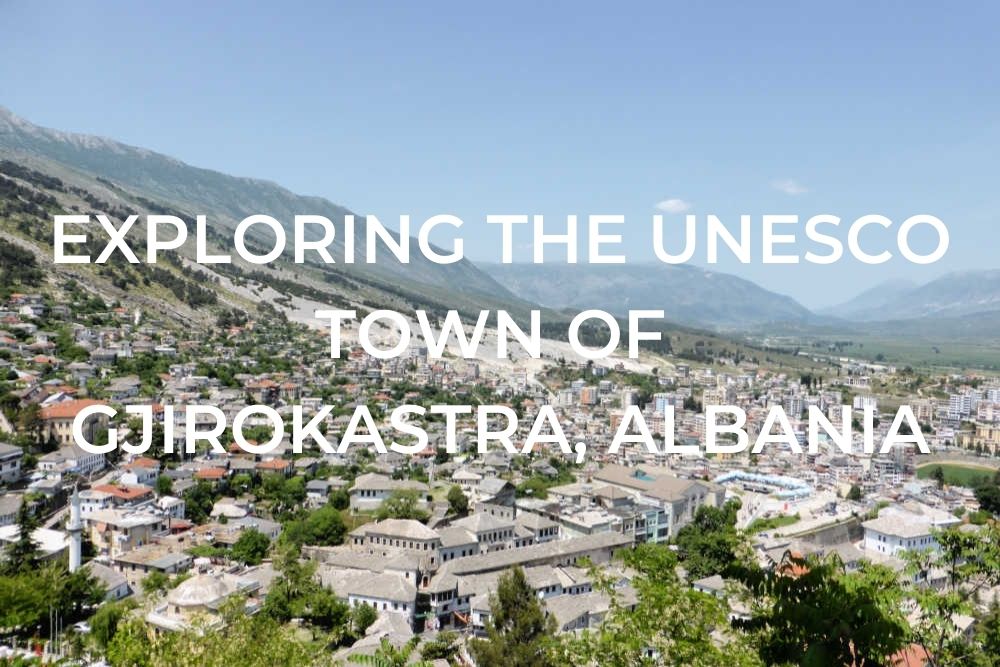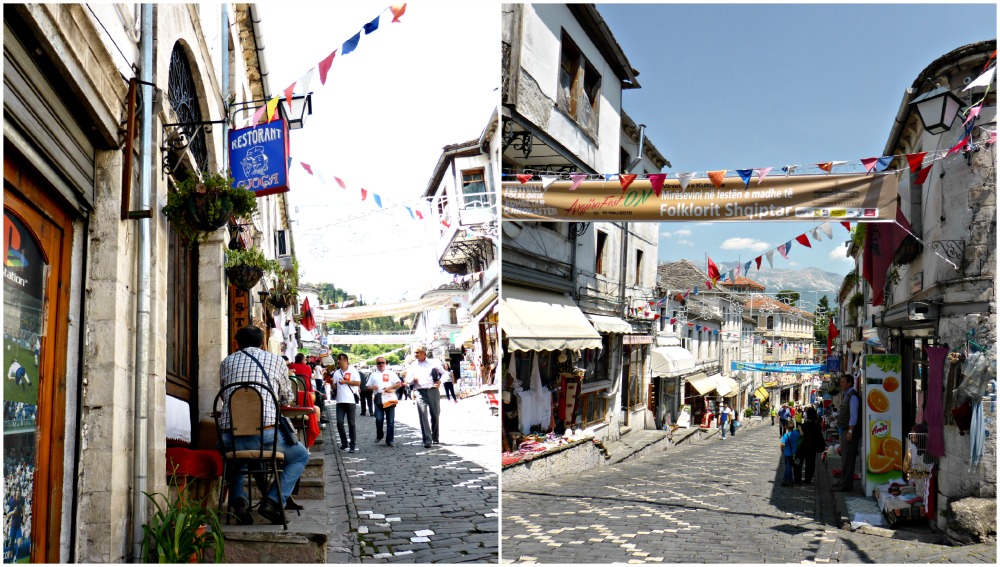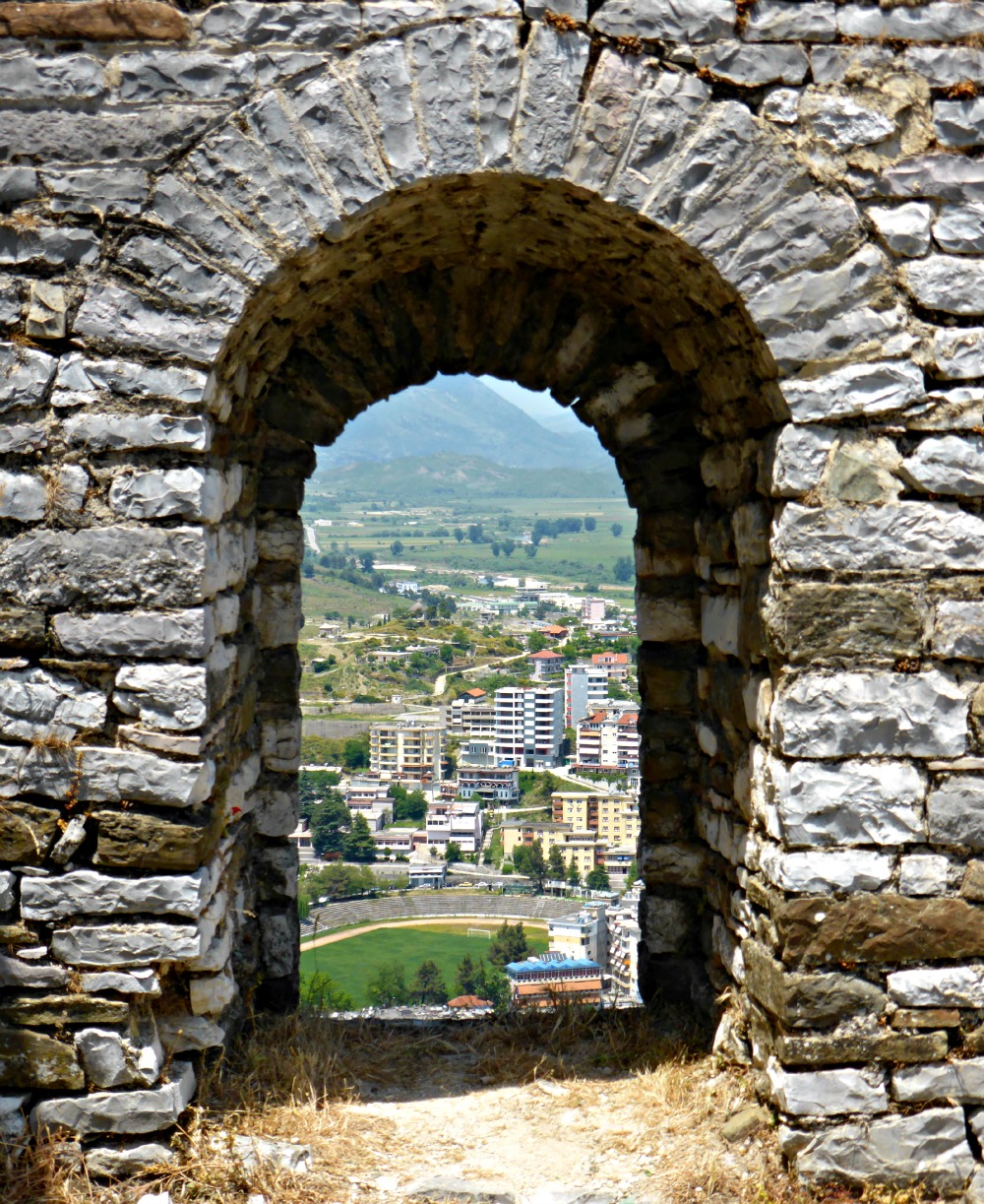

Two UNESCO sites in one trip? You betcha! And you know that made this UNESCO site lover very happy indeed.
Inscribed to the UNESCO World Heritage list in 2005 as a rare example of the architecture typical of the Ottoman period, Gjirokastra was our next stop on our Albanian tour.
Situated in the Drinos river valley in Southern Albania, with a stunning backdrop of snow-capped mountains, Gjirokastra is known as the “city of a thousand steps” and indeed it was!
The steps began when we were dropped off at the bottom of the street leading to the bazaar by our coach. Too big for the narrow cobblestone streets the coach was greeted by a van that transported our luggage up to our hotel and we all set off on foot through the buzz of activity in the streets. Our first destination being the castle at the top of the hill.

This post may contain affiliate links. Please read our full disclosure policy here.
Perched high above the city the castle is definitely one place you’ll want to visit if you’re in town, if not for the castle and its museum, then certainly for the views of the city below.


Originally built in the 12th century, the castle has undergone many changes since then, as it has been added to and changed purposes by the many leaders of Albania during that time. One of my favourite parts of the castle, the clock tower, was added in the 18th century, along with an aqueduct.

Check out those mountains in the background!
The king with the best name ever, King Zog, converted the castle to a prison in the 1930s by adding cells that held members of various resistance groups. It remained a prison until 1968 but today it is a historical site with an arms museum devoted to weapons of Albania’s independence.
It is also the home of an American fighter plane with several theories of what brought it to its resting place. Was it a pilot that ran out of fuel? Captured? Shot down? Hmmm. All we know is that we were a bit disappointed to find it covered in a tarp when we visited.

These days the castle is also used as a concert pavilion and we were fortunate enough to be there on a day when there was an event going on. Music drifted down from the castle all day and into the evening along with fireworks to cap off the evening’s festivities.
After our visit to the castle, we made our way back down the hill to the centre of town where we had some free time to do a little wandering, grab some lunch, and do a little souvenir shopping.

From here we wandered further up, up, up the hill to the best-preserved district in the old town, Palorta, to the ethnographic museum. Originally the site of the home of Enver Hoxha, the communist dictator from 1944 to 1985, the original house was destroyed in a fire in 1966.

The reconstructed house is a model of the traditional homes with their classic features such as whitewashed walls, a stone roof, and wooden balconies. The museum is four floors that are open to the public with rooms arranged as they would have been used and a helpful, knowledgeable guide to lead you through the rooms and explain everything there is to see.

The rooms are decorated with household items, folk costumes, and cultural artifacts of a typical wealthy family from the 19th century. My favourite parts were each of the rooms, I like how simply they are decorated. And the woodwork throughout the house, especially this medallion on the ceiling.
Absolutely, beautiful.

RESOURCES | PLAN YOUR TRIP TO ALBANIA
Some of the links in the post above are affiliate links. This means if you click on the link and purchase the item, we will receive an affiliate commission but this does not affect the price to you. Please read our full disclosure policy here.
